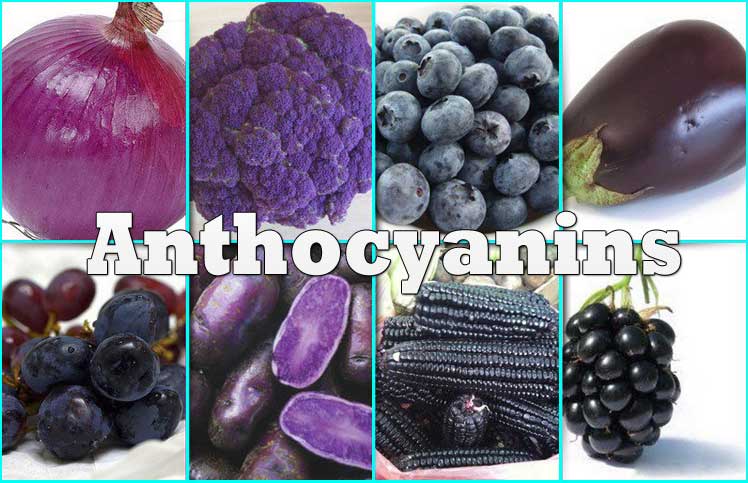Anthocyanins Review
Your Complete Guide to Anthocyanins
Anthocyanins are the chemical compounds that give plants and fruits their unique colors. Recent studies have shown that anthocyanins are more than just pigments: they also have powerful health benefits by acting as flavonoids and antioxidants.
What Are Anthocyanins?
Anthocyanins are water-soluble pigments like purple, blue, and magenta. They give plants – as well as the fruits and flowers of those plants – their unique colors.
Chemically speaking, anthocyanins are flavonoids. They’re formed when phenylpropanoid metabolizes from phenylalanine.
In plants, anthocyanins play two roles: one, they provide color. And two, they appear to protect photosynthetic tissues from the oxidative stress induced by light, which extends the lifespan of the plant.
Anthocyanins are just one of many types of compounds that give plants their color. These compounds are called phytochemicals, and they give plants the full spectrum of the rainbow. Other phytochemicals include:
— Chlorophyll (green)
— Lycopene (red)
— Carotenoids (yellow/orange)
— Anthoxanthins (white)
— Flavonoids (colorless)
Many health advocates recommend “eating the rainbow” because you can access the full spectrum of health benefits phytochemicals like anthocyanins have to offer.
Depending on the time of year, you may be able to look outside your window and see anthocyanins: they’re the primary chemical responsible for providing red pigmentation to autumn leaves. Certain yellow and orange autumn colors, however, are due to carotenoids.
Benefits of Anthocyanins
A growing number of studies are showing that eating anthocyanin-rich food is associated with good health.
Evidence for this first appeared in the late 1980s in a study called French Paradox. The “French Paradox” name referred to the fact that French people experience only 30% of the number of heart attacks as Americans, despite having higher blood cholesterol, higher blood pressure, and eating four times more butter on average.
Researchers determined that the good health of the French was attributed to their moderate consumption of red wine. Researchers theorized that the alcohol content in red wine provided a cardio-protective effect.
The alcohol content theory, however, turned out to be false: white wine, which had similar alcohol content, did not provide the same benefits. Researchers began to study the other chemical compounds within red wine, including the anthocyanins and polyphenols. These compounds were observed to be more bioactive, which meant they played a greater role in the human body.
Ultimately, we don’t know how exactly anthocyanins work. But here are some of the benefits that have been suggested:
— Better Cardiovascular Health And A Reduced Risk Of Heart Disease
— Weight Loss, Because Anthocyanins Have Been Shown To Inhibit Weight Gain Even When Eating A High Fat Diet
— Protect Against Chronic Diseases (possibly Including Cancer) By Acting As Powerful Antioxidants
— Better Gut Health And Easier Digestion
Of course, anthocyanins also come with some indirect benefits: if you’re consuming large levels of anthocyanins, then that usually means you’re also eating large levels of healthy fruits and vegetables. These foods are packed with vitamins and minerals and are an important part of a healthy diet.
The flavonoids in blue and purple fruits and vegetables are thought to be particularly beneficial at protecting the brain and reversing the short-term memory loss associated with aging. These flavonoids also complement the cardioprotective effects of the anthocyanins and make our blood vessels healthier.
Best Sources of Anthocyanins
Want to add more anthocyanins to your diet? Try eating these foods throughout the day:
— Blackberries
— Blueberries
— Eggplant
— Figs
— Juneberries
— Plums
— Purple asparagus
— Cranberries
— Red cabbage
— Prunes
— Purple grapes
— Red wine
— Kidney beans and black beans
— Pomegranates
— Red-fleshed peaches
— Cherries
— Raisins
— Bananas (yes, despite the yellow color, researchers have found that bananas are an effective source of anthocyanins)
If you want to protect your heart and reduce your risk of disease, then adding some of the foods listed above can play a significant role in your diet and overall health.









